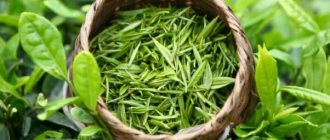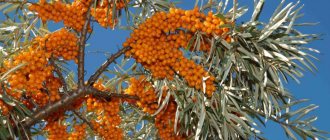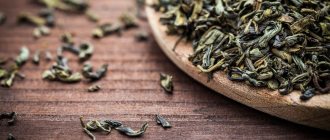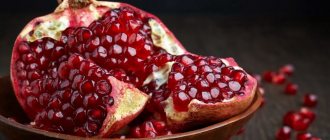The tea ceremony in the East is not just an ancient tradition. They take it very seriously. Each Chinese province prefers its own variety: for example, in the south they drink green tea more readily, in the north they drink red tea, in the Fujian region they prefer oolong tea, and in the Yunnan region the most popular are post-fermented varieties. Among them, pu-erhs stand out - these are shu and shen, which have fundamental differences in both beneficial properties and taste.
The taste and other characteristics of even the same variety can vary depending on the place where the bushes grow, the time of collection, and the method of processing.
What it is
A powerful natural energy drink, the value of which only increases with age. This drink is often compared to good wine: the longer it is aged, the more spectacular and refined the taste will be revealed.
In a very general sense, we can say that this is a tea in which the fermentation processes do not stop, which happens in the production of other varieties. Thus, over time, it not only does not lose its beneficial properties, but, on the contrary, infuses and is filled with energy. The older the pu-erh, the more expensive it is.
There are two varieties of this drink: shu (black, “ready”) and shen (green, “raw”). They are made from the same raw material, grown in Yunnan province in the region of the “Six Famous Tea Mountains”, but after passing through different stages of processing, each of these types acquires its own character.
The historical period VIII-IX became the starting point for the emergence of these varieties. It is known that the first pu-erhs “for sale” appeared in the southern region of Xishuangbanna. From here, tea leaves were exported in caravans to Mongolia and Tibet along a road called the Ancient Tea Road.
Effect on blood pressure
The ability of Pu-er tea to increase or decrease blood pressure depends on the variety. Green Shen has the ability to slightly reduce blood pressure due to the vasodilating effect of theine and theophylline.
It is approved for use in hypertension. But you shouldn’t get carried away with this drink: 1-2 cups a day is enough to saturate the body with all the beneficial substances.
“Mature” black pu-erh tea increases blood pressure due to its higher caffeine content. This hypertensive effect of the drink is not very powerful, since it is partially neutralized by the amino acid theanine.
A significant increase in blood pressure is possible only if you abuse this tea, or if you drink a very strong drink. However, if you have high blood pressure, it is better to give up Shu Puer tea, or use a very small amount of tea leaves.
Difference between Shen and Shu Puer
The first of these two brothers has a long history, dating back to the "Ancient Horse Tea Road". Noticing that during long caravan trips, tea begins to change and acquires a more noble taste and aroma, Chinese manufacturers created a method of artificial aging. The harvest collected on the plantations began to be fermented, thus revealing the velvety taste and increasing the price of the product.
The light version of the drink is obtained from raw materials that are naturally fermented, while in the dark version these processes are started intentionally. Let's consider these and other features of the varieties in more detail.
Differences in appearance
Shen Puer can be in the form of a flat cake, a bowl with a depression, a square or a circle. It is rarely found in loose form. Since its fermentation process continues continuously, the color of the leaves darkens over the years. So, initially they have a light green tint, and then reach almost black. Kidneys with white fibers are often added to pancakes. This is done solely for aesthetic purposes; the lint does not affect the taste of the infusion.
Intentionally aged shu can be either crumbly or packed into disks or bricks. Its color range already at the time of arrival on the counter varies from red-brown to completely dark.
The same applies to the finished drink. The first will be fresh, light, and the second will be richly dark.
By aroma
The aromatic properties of shen pu-erh directly depend on the aging time. Over the course of several years, this tea gradually opens up. Here's the path he takes:
- Herbaceous smell. The infusion smells like freshly cut grass in the early stages of fermentation.
- Rich green notes. Occurs at a deeper degree of drying.
- Floral and fruity accords appear after tannin oxidizes. They are accompanied by a slight viscosity of taste.
- Next, the infusion becomes honey.
- Pu-erh gets its woody or “Rose Banks scent” from old trees. It is extremely rare and is an indicator of the high quality of raw materials.
- The musty smell of rotten wood occurs when shen is stored for many years.
The aromatic characteristics of shu pu-erh are described as soft nutty, peaty, woody with notes of plum, dates and chocolate. Keep in mind that the presence of specific shades of rotten fish and dampness is not the norm. Probably, there were violations in the preparation of such a product. A quality product always smells nice.
Taste
A properly brewed light infusion has some sourness and a sweet honey aftertaste. The dark one is thick and velvety with that famous earthy taste without sweetness.
According to production technology
Shen puerh leaves can be processed minimally. They go through the stages of enzyme inactivation, rolling, sun drying and pressing. In this case, roasting is carried out in such a way that the oxidation of tea leaves does not stop, but only slows down. Due to the continuation of the oxidation process, the color of the tea leaves darkens over time.
Shu pu'er is deliberately aged. It is processed until complete fermentation with the help of moisture. Dried, rolled and slightly dried leaves are laid out in a thick layer and subjected to post-fermentation. The combination of high humidity levels and hot air accelerates the proliferation of microorganisms, which contribute to the browning and rapid fermentation of tea. This process can take up to several months.
Differences in brewing
The difference in preparing an infusion from light or dark raw materials lies in the temperature of the water. For the first, you need to heat the liquid to 80-90°C, while the second will require almost boiling water (95-98°C).
The first two brews of the “green” product should not exceed 3-5 seconds. Further waiting time can be increased by 15-20°C. This way you will get rid of bitterness.
Brewing rules
In order to fully enjoy this unique drink, you need to follow some simple recommendations.
- You will need porcelain, earthenware or glassware.
- Soft water without impurities must be brought to a boil 3 times (drain some and add cold). It is better to carry out heating in the container indicated above, but it can be done separately. After boiling, the water needs to be stirred.
- First, pour boiling water over the tea leaves and drain immediately. This is done to cleanse the mixture of impurities and microorganisms, as well as to fully develop the aroma.
- Re-fill the tea with water at the required temperature and infuse. The brewing period can vary from a few seconds to a couple of minutes, it all depends on your preferences.
- When the tea leaves settle to the bottom of the container, you can start drinking tea.
- Drink the drink in small sips.
Attention.
- All varieties of Puerh are brewed exclusively with boiling water to reveal the unique taste and aroma.
- It is allowed to use milk to brew the drink.
- When using earthenware, you need to pay attention to the fact that it can absorb aromas. Therefore, it is better to take separate containers for brewing different varieties of Pu-erh.
- The combination of Shu Pu'er with various additives is encouraged, such as berries, spices, herbs or berries.
Shen and shu pu'er: what unites them
Despite the fundamental differences in production, taste and properties, both drinks have several common features that allow us to speak of them as representatives of the same tea type:
- the raw material is grown in Yunnan province and consists of 3-4 top leaves collected from woody bushes;
- the shapes in which tea is packaged can be completely different - from a flat cake to a pumpkin;
- Both infusions perfectly invigorate and have a beneficial effect on the condition of the body.
How Sheng Pu'er is made
To create young raw materials, three to four leaves are used, which is extremely important for revealing the unique aroma of the drink. It is believed that it is the third and fourth shoots that play the most important role in the formation of the beneficial properties of the infusion, as well as its aromatic and taste properties: they have grown longer on the tea tree, and therefore are rich in polyphenols and minerals.
Fresh tea leaves are fried in a cauldron, rolled and dried in the sun. This processing technology does not greatly affect the temperature of the raw material, so fermentation occurs only partially. During further storage, it continuously continues naturally, gradually changing the taste and aroma of tea.
Packaging in the form of flatbreads is no longer a necessity, but a tribute to tradition. In this form, pu-erh is recognized both in the East and in the West.
Key principles
You can get a tasty and healthy drink using high-quality raw materials (infusion) and water. In addition, the dishes in which tea is brewed play a role. It is important to know how much Pu-erh to brew in order to get a tasty and healthy drink.
Water can be used spring, bottled or filtered. In any case, it is important that it does not contain large quantities of heavy metals. Another important point is that the water should not boil intensely.
It is not recommended to use utensils made of metal or low grade clay when brewing Puer. Before brewing, it is rinsed and heated with boiling water.
The water should not be heated to more than 90-95 degrees. Then it must be poured into a thermos to maintain the desired temperature. You should not use heated water for Pu-erh. This will affect the taste of the drink.
Back to Contents
Useful properties of Shen Puer
It is often compared to expensive wine or cognac: over the years, this variety becomes better, softer, bitterness leaves it and new flavor notes appear. The rarest old varieties of “raw” products are practically national treasures of China and are prohibited for export. The price of the treasured leaves also increases over time.
In addition to its invigorating effect and increased performance, regular consumption of this drink improves digestion, cleanses the body of toxins, lowers cholesterol levels in the blood, increases vascular elasticity, speeds up metabolism, supports the functioning of the heart muscle, and normalizes the condition of the gastrointestinal tract.
The special biochemical composition of mountain leaves causes a slight tea intoxication, relaxes and calms the mind, and gives a carefree, joyful mood. This is a tonic infusion that stimulates the activity of the cardiovascular system, so it is worth drinking it in the first half of the day. The drink is recommended for anyone who has problems with blood pressure, concentration and performance. And thanks to its ability to remove waste and toxins, it will become a good assistant in the fight against alcohol and nicotine addiction.
Contraindications
Chinese sages consider pu-erh to be a “cure for 100 diseases.”
But, like every medicine, this tea has a number of contraindications:
- The drink is not recommended for people with kidney stones, as it has a powerful diuretic effect. Its use can cause exacerbation of the disease and the appearance of renal colic.
- It is forbidden to drink Pu-erh of the Shen variety if you have a peptic ulcer, gastritis, or any disease accompanied by increased acidity in the stomach.
- Gynecologists advise avoiding this drink for the entire period of pregnancy and lactation.
- Pu-erh tea increases the pressure inside the eyeball, so it is contraindicated in patients with glaucoma.
- It is not recommended to give the drink to children: the caffeine content is excessive for a fragile body.
Doctors advise people with a labile nervous system to avoid drinking this type of tea. This is due to the fact that this category of patients often has increased sensitivity to caffeine. Even a small dose causes a significant increase in heart rate.
How to brew
If you purchased pressed tea, you must carefully separate a small portion, being careful not to damage the leaves. To do this, you can get a special special knife. An awl can also replace it. For 150 ml of water you will need 4-5 grams of tea leaves.
To prepare the drink, use glass or ceramic containers. Since, due to the essential oils contained in pu-erh, its odor tends to accumulate, vessels made of porous materials (clay) are definitely not suitable.
Before you start, you need to warm up the kettle. Next, heat the water and rinse the leaves in a container for 2-3 seconds and drain it. The infusion will be ready for use only after the second brewing. The water temperature for each species is different:
- For young Shen Puer – 80-90°C, for aged – 85-98°C.
- For Shu – 98°C.
Young tea leaves can be bitter, so the first two times it is brewed for only a few seconds. Further time can be varied from 8-10 to 15-30 seconds depending on the desired strength.
Clinical effectiveness
The drink has become popular in the Western world due to its low caffeine concentration and supposed “fat-burning” properties. Real pu-erh contains very little caffeine, much less than a cup of coffee or other tea. This drink is most common outside of China - in Russia and Europe. It is also popular among Germans.
The effects of Pu-erh tea on the central nervous system and various organs are very controversial. Previously, tea was advertised as a means of losing weight and was sold almost as a miracle cure. The drink is still used by some people for these purposes.
There is no scientific evidence of the drink's effectiveness against obesity. The German Nutrition Society disagrees with these claims and even warns that cheap tea from some agricultural areas may be heavily contaminated with pesticides.
Obesity
Excessive consumption of tea, like other tonic drinks, can be harmful to health.
How to choose
When choosing products, it is important to pay attention to the date of manufacture. The month of production should be spring or summer, and the year will tell you about the age of the product, and, consequently, about the taste and aromatic properties.
The structure of a high-quality cake is always dense, elastic and homogeneous: without cuttings, dust, or damage. Even when dry, the brew smells pleasant and thick, without any extraneous, strange aromas.
The finished infusion should be translucent, not cloudy, without sediment, dust or crumbs. It tastes slightly astringent, with a slight bitterness and astringency, but drinks easily and softly.
Remember that the price of tea is directly proportional to its quality. Pu-erh is an expensive product, and its cheap analogues are most likely fakes. You can get acquainted with the price category of this variety in the catalog of the Russian Tea Company. Place an order on our website and do not doubt the reliability of your purchase. We supply raw materials of both premium and highest, first or second grade from certified plantations in Yunnan.
How to store
Unlike other Chinese products, shen does not require sealed, vacuum packaging. On the contrary, it needs fresh air for fermentation and opening. It is no coincidence that it is called “living”, breathing. At the same time, sufficient humidity (45-60%) must be maintained. Excessively dry conditions, as well as too much moisture, will ruin the brew.
Room temperature is fine for storage. It is important to isolate the leaves from foreign odors (such as spices), as well as dust and bright light. The ideal place to put the purchased “pancakes” would be a wooden box, a closet or even a bookshelf.










